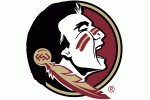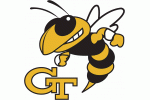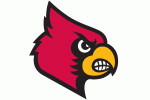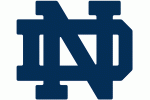I am fortunate to have a number of friends in the medical profession, one of whom happens to be an orthopedic chief resident who specializes in the hand and wrist; he also happens to be a former DI athlete and an avid sports fan who was already familiar with the Marshall injury before I contacted him. He has graciously agreed to provide answers to a few higher level questions so we can get a better idea of the type of injury that Kendall has sustained, and what type of recovery options he is looking at.
Let’s start with the basics: just what is a scaphoid fracture and how much variation can there be from patient to patient?
OK, the scaphoid is one of the eight small bones in the wrist. Fractures of this bone classically occur with falls on an outstretched arm like Marshall did. They differ in how they are treated (operatively or nonoperatively) often based on where they occur in the bone. There is also not universal agreement on how to treat nondisplaced scaphoid fractures amongst orthopaedic surgeons. Some surgeons largely prefer nonoperative treatment, though many would advocate operative management except for particular types of fractures. Interestingly, they often present late as 1) people often think it is just a sprain 2) it is often difficult to appreciate on x-rays initially.
That they often present late certainly jives with the fact that Marshall continued to play after the injury occurred. We now know that he has been fitted for a soft cast, which UNC is saying is for his comfort. Am I correct in assuming that this is standard operating procedure, regardless of whether an operative or non-operative route is taken?
Yes. A cast/splint is routine once a fracture is diagnosed. If he ultimately needs surgery, he would be in immobilized until his surgery for comfort and to prevent any interval displacement of the fracture. If not, he would be in a cast for 2-3 months while the bone healed. He could likely physically play (eg. play through the pain), but I find it unlikely the team doc will allow it/recommend it.
And what are the risks if did try to play through it? I think too often it is easy to get caught up in the “now” and forget that these kids have far more at stake than winning a few games in March (as much as they may truly want to do just that).
Right. The problem is this bone has a tenuous blood supply, and if it does not heal well, the bone can die (avascular necrosis or AVN). The risk would be that if he played and displaced the bone further or otherwise disrupted the fracture healing by further harming the blood supply, the bone could progress to this AVN This can throw off the architecture of the wrist and lead to substantial accelerated arthritis which can be disabling and require significantly larger procedures like partial wrist fusion or removal of several of the wrist bones. Fixing the fracture with a simple procedure now would be far less involved and likely prevent those larger problems.
So I think that pretty much takes care of the most pressing questions. Anything deeper would require you to see his scans, and at that point you couldn’t talk about it anyway. I guess the closing question would be, if Kendall were your patient, what would your recommendation be, and is there any chance that this is less severe than it seems?
Well, I don’t mean to be evasive about his treatment, but for a bone that’s just a couple of centimeters, a lot can depend on where the fracture is and whether it’s displaced. I think he could very well have surgery, but regardless, he will be immobilized for the remaining time left in the tournament. I suppose if he were my patient or my hypothetical son, I would not let him play. Still, this is difficult, because the athlete in me would want to play, fracture or not.
—-
I want to again thank my friend for taking the time to answer the questions on such short notice. Hopefully they have helped increase understanding a bit, but now there is not much more that we can do but wait. This is obviously a crushing body blow to the UNC team, but to paraphrase from Monty Python: they are not dead yet. The Tar Heels will still take the court on Friday with a roster that includes up to 6 future 1st-Round picks; they are still the most talented team in the country outside of Kentucky. This team can still make a run to, and through, the Final 4. It will require that its remaining players play at a very high level, but it is a level which they all possess. No one has to do more than they are capable of… they just have to find a way to do what they are capable of.
















